Baking really is a science. There are a lot of things that can go awry when making a cake! One of the more common questions people find themselves asking is “why do cakes sink in the middle?” Or “why did my cake sink?”

I touched on this topic briefly in my cake troubleshooting guide, but I felt like this topic deserved a bit more detail.
While you might think there’s one main cause, there are a few!! A lot of different factors can cause cakes to sink in the middle.
The goal of this post is to help you understand why cakes sink in the middle and how you can prevent it next time.
I also share some tips on how you can salvage cake layers that sank.
Culprit #1: The Cake Layers Are Underbaked
The most common reason why cakes sink in the middle is that they’re underbaked.
If a cake isn’t fully baked through, the center doesn’t have a chance to set and it will sink. This creates a doughy, dense texture in the center of your cake layer.
How To Prevent This Next Time:
Bake your cake layers a couple minutes longer! Or if you’re unsure if the cake is baked through, check with a toothpick.
The cake is ready when the toothpick comes out with a few moist crumbs.
Culprit #2: Too Much Leavening Agent
The third possible culprit is too much leavening agent, or the wrong type.
Too much leavening agent like baking soda or powder can cause a cake to rise too high too quickly.
The gas from the leavening agents builds up and escapes before the cake bakes through in the center. This causes the center to collapse and makes your cake layers sink in the middle.
A little goes a long way when it comes to leavening agents, so it’s imperative you precisely measure them!
Always level the top of the spoon with either the top of the box or a knife to make sure you are using the right amount.
This sounds silly, but it’s also important to make sure you’re using the right leavening agent.
Baking soda is about 3x more potent than baking powder, and they are not interchangeable.
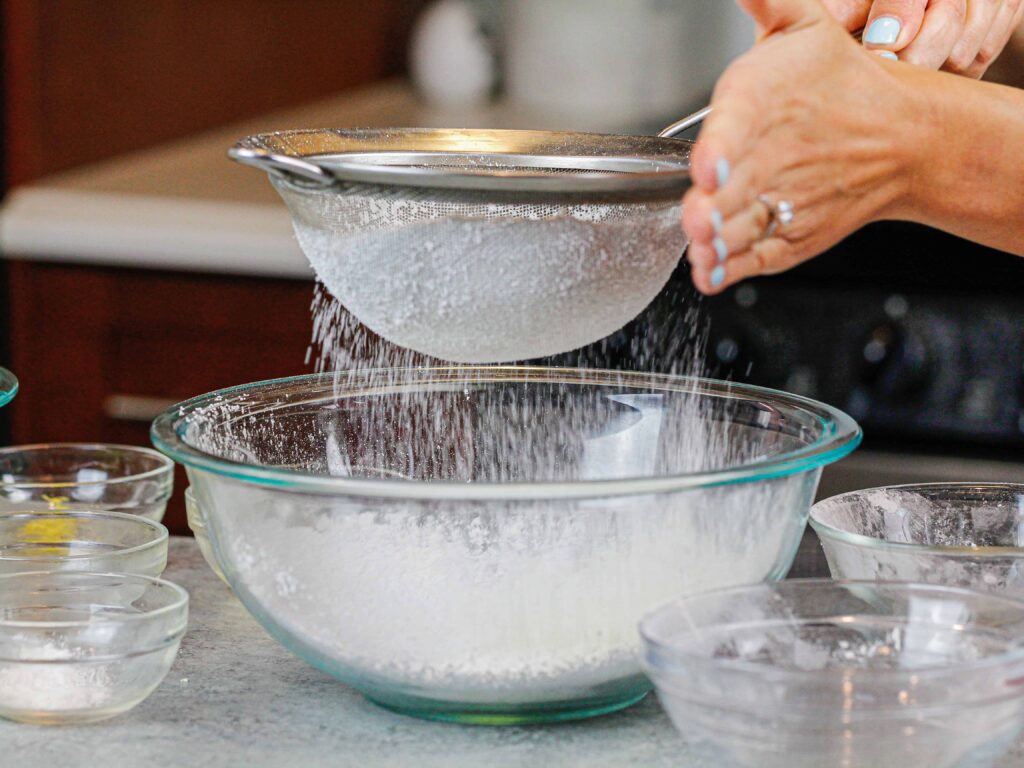
How To Prevent This Next Time:
Be sure to carefully read the amount of leavening agents a recipe calls for, and measure them precisely with a teaspoon.
There also is a chance that the recipe might be bad! Sadly not all recipes are formulated correctly, and sometimes this can also be the problem.
If you try making a certain recipe a few times and your cake is still sinking in the middle, you may want to try a new recipe.
Culprit #3: Oven Door Was Opened / Slammed
While it’s common practice to rotate cake pans part way through baking, this can sometimes cause problems.
If the oven door is slammed after it’s opened, it can cause partially baked cake layers to sink in the middle.
If the center isn’t set as the oven door is slammed, it can collapse and won’t be able to rise up properly again.
How To Prevent This Next Time:
If you need to rotate your pans, be sure to carefully close your oven door after doing so.
Or if you want to sneak a peek at your cake layers, try to just look through the oven door rather than opening it.
Culprit #4: Your Oven Temperature Is Off
Another culprit is your oven! Unfortunately not all ovens bake accurately. You can run into some serious problems if your oven runs hot or cold.
For example, say your oven runs a bit cool. Even if you bake your cake following the bake time included in a recipe, it won’t bake through in time.
Or if your oven runs hot, the cake layers will brown more quickly. This might make you think the cake is baked through.
But sadly the cake layers haven’t had enough time in the oven to bake through in the center.
As the layer cools, the center will sink down because it didn’t have a chance to set.

How To Prevent This Next Time:
Test your oven temperature with an oven thermometer.
If your oven runs cold, raise the temperature of your oven to ensure it bakes at the actual temperature the recipe calls for. Or if your oven runs hot, adjust it down as needed.
Culprit #5: Using a Different Pan Size
Using a different pan size than a recipe calls for can drastically change the bake time required.
It can cause your cake layers to be quite a bit thicker or thinner than the recipe intends.
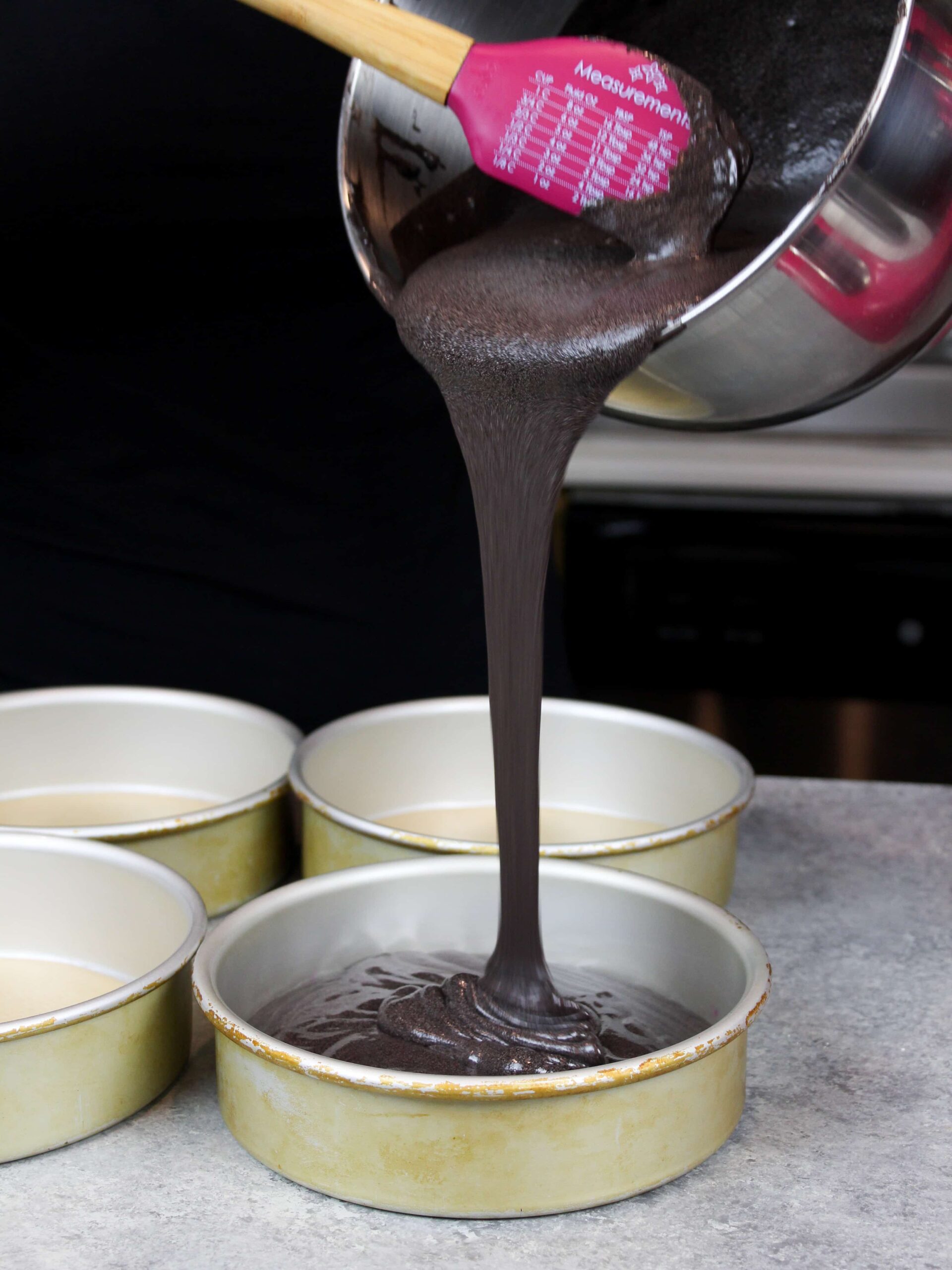
How To Prevent This Next Time:
I recommend using flower nails if you need to bake cake layers that are larger than a recipe calls for.
When I bake large cake layers or sheet cakes, I like to place a few flower nails evenly apart in the center of each pan.
This helps the layers bake more evenly and quickly, because they help conduct heat into the center of the cake layer.
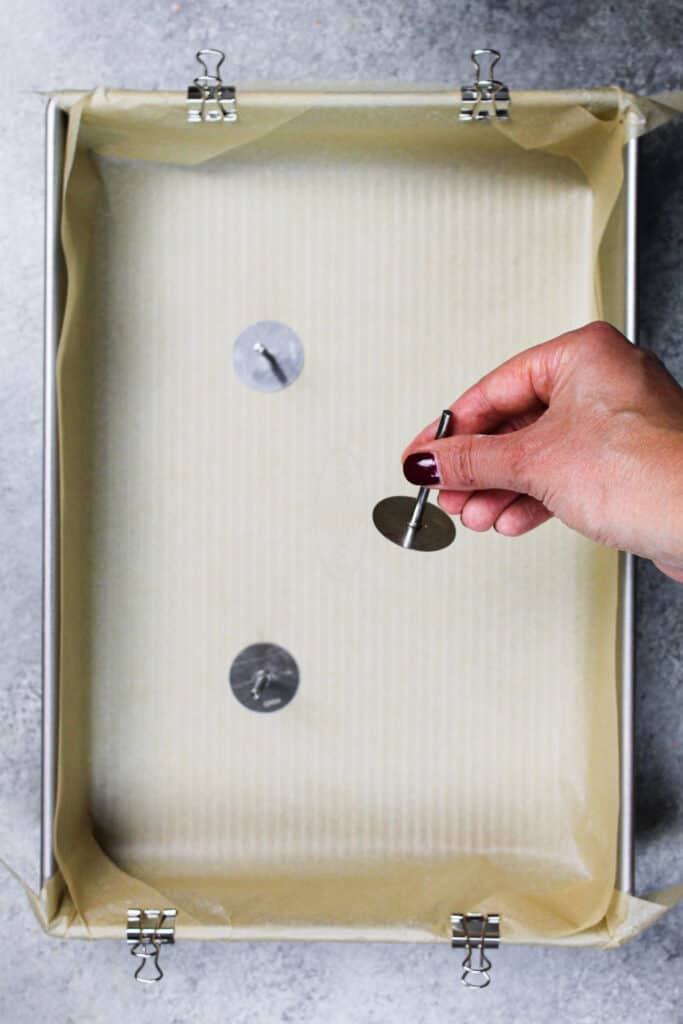
It’s also important to calculate the amount of batter you need correctly. This will help ensure that your cake layers a similar thickness to what the recipe intended.
How To Fix Cake That Sank in the Middle
If you find yourself with a cake sunk in the middle, there are a few things you can do to fix it.
Sunken Cake Fix #1: Level the Cake Layer
The easiest and quickest fix is to level the cake layer. This allows you to cut away the under-baked or raw section and leaves you with a level cake layer.
However, this only works if the center only sinks a bit.

Sunken Cake Fix #2: Pop the Layers Back in the Oven
If you notice that the center of your cake sinks right after you take it out of the oven, you can pop it back into the oven for a couple minutes.
This won’t actually fix the sunken center, but it will help the undercooked center bake through.
Sunken Cake Fix #3: Use Extra Buttercream To Assemble The Cake
If all else fails, you can cut away the undercooked sections and just fill the cake in with a bit of extra frosting. Buttercream can fix just about anything in my opinion 🙂
You can also just remove the center completely with a circle cookie cutter and make a candy or sprinkle-filled cake like this.
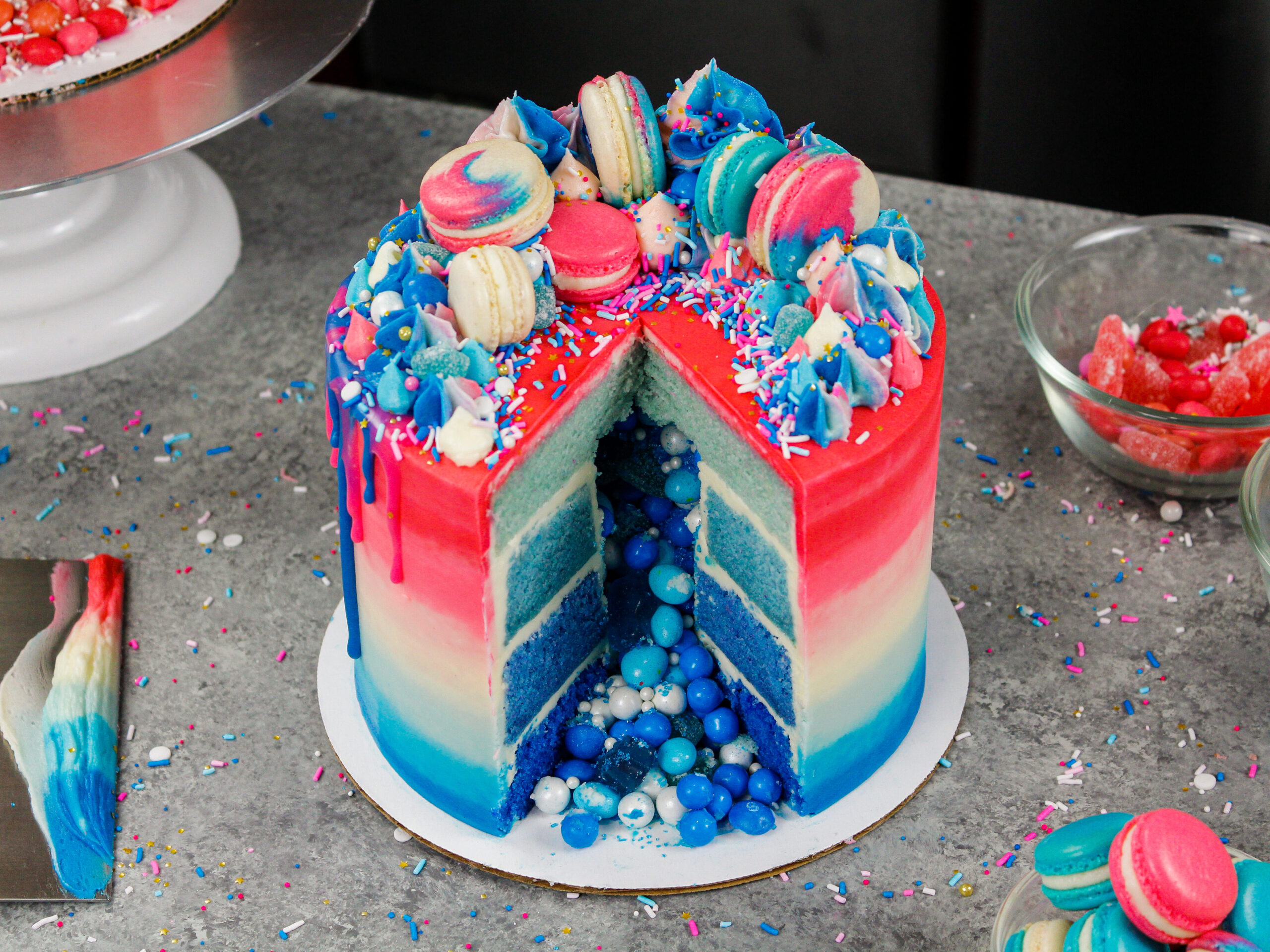
Let Me Know What You Think!
I hope you found this post helpful, and that your cake layers bake through fully and rise nice and high from now on.
If you think your cake sank for a different reason, let me know what issues you’re having in the comments section below. Hopefully we’ll be able to figure it out together!
Other Posts You Might Like:

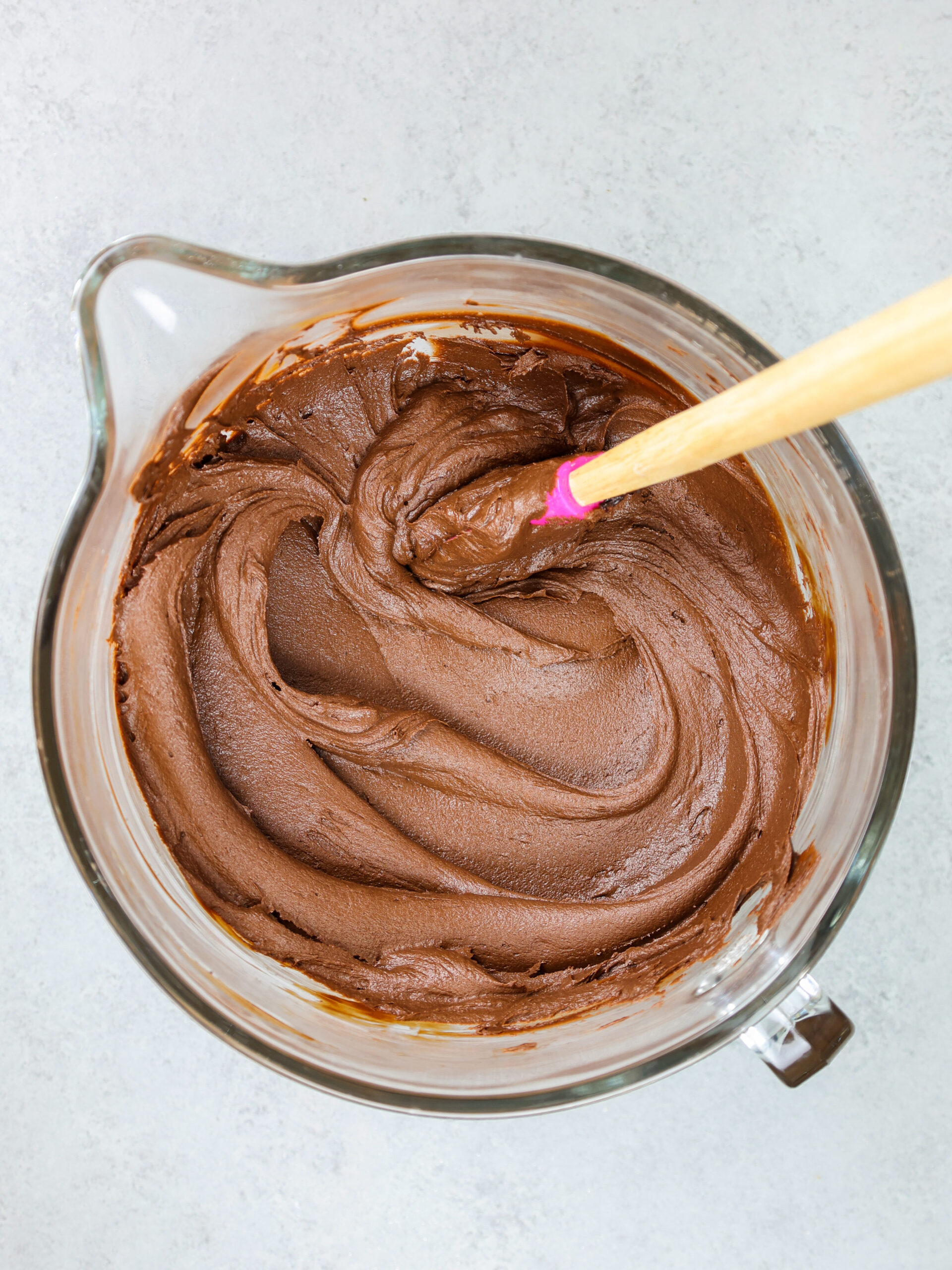



Rosslyn Baker
Saturday 15th of October 2022
I have been making my chocolate cake for many many years but the last twice the centre sank and the top was sticky. They rose at first beautifully but then sank. Moderate oven and very exact ingredients. I’m at a loss. Would appreciate your advice. Could I be creaming the butter and sugar too much. The outer cake was cooked and the inside was like a brownie. Thankyou
Chelsweets
Monday 17th of October 2022
Hi Rosslyn,
I have had that happen to me before where I over-creamed my butter and sugar and the centers sank. I'd set a timer or consciously try to cream them a little less next time and see if that helps! If not, we can brainstorm some other ideas as to what might be causing it. Fingers crossed that's it though!!
The Delicious History Of Lemon Cake – Little Upside Down Cake
Wednesday 21st of September 2022
[…] the case of a sunken cake that you do not want to eat, you can cut it into small pieces and freeze it. After it has frozen, […]
Lesley
Wednesday 7th of September 2022
I baked twice last night a red velvet three layer cake ( that I’ve made many times before throughout the years) using all not expired ingredients and it’s like the center didn’t raise …the edges did and the center was fine and already low before removed from the oven and I just don’t understand. I made it the second time thinking maybe I did something wrong the first time but no, the second one came out exactly the same. It tasted fine I’m just upset about the appearance. Any ideas?
Chelsweets
Sunday 11th of September 2022
Hi Lesley,
That is a confusing, especially since you've made this recipe several times in the past. Sometimes I find the amount the sides of a cake rise can affect how the center rises too, and that can be influenced by the type of nonstick spray you use and the amount. However, you might be buttering/flouring the pans or using homemade cake release, so i'm not sure that would be it. My only other thought is that maybe your ingredients were a tiny bit cold or not totally at room temperature? That always makes my layers rise less too.
Is there any chance it's one of those?! If not I'll keep brainstorming!
Lesley
Wednesday 7th of September 2022
*center did not rise…it was already flat when I opened the oven to take out the layers
Lisa
Tuesday 23rd of August 2022
It don't fully rise in the middle. I've bought new flour, baking soda, Baking powder. Bought a brand new oven. Help going crazy. Never had this problem.
Chelsweets
Sunday 28th of August 2022
Hi Lisa,
So sorry to hear that! What recipe are you using?
Top 10+ How To Fix A Sunken Cake 2022: Things To Know - Dream Cheeky
Friday 12th of August 2022
[…] Source: ? […]